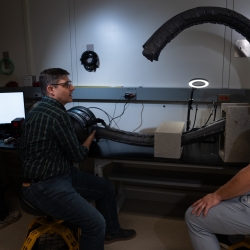

Human Resilience Technology
We use our experience developing sensors, analytics, and decision support software to build technologies and systems that improve human resilience by aiding in wildfire response coordination, urban search-and-rescue missions, damage assessments after hurricanes and earthquakes, and large-scale evacuation planning. We work closely with local, state, and federal agencies to develop these technologies. Our goal is to enable organizations to more effectively gain situational awareness, share information, and make decisions in times of crisis. We also prototype technologies that facilitate civilian–military collaboration, which helps to improve the safety of civilians in conflict areas. Many of our programs involve collaboration across Laboratory groups whose technologies can be applied to human resilience missions.
Featured Projects

Vine Robots for Collapsed Structure Mapping

Multi-label Dataset and Classifiers for Low-Altitude Disaster Imagery

Private Automated Contact Tracing

DisasterSat




